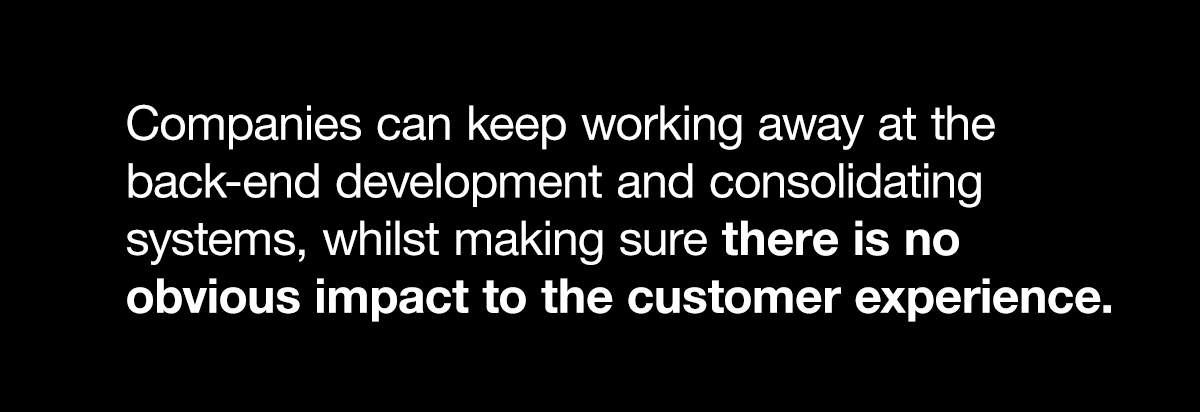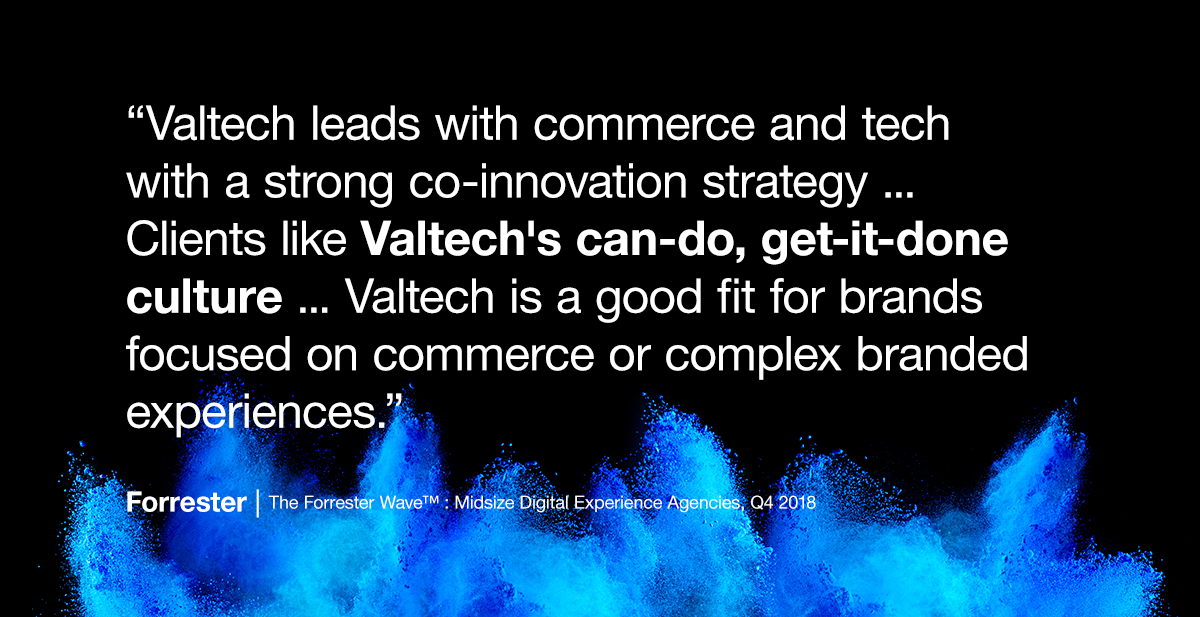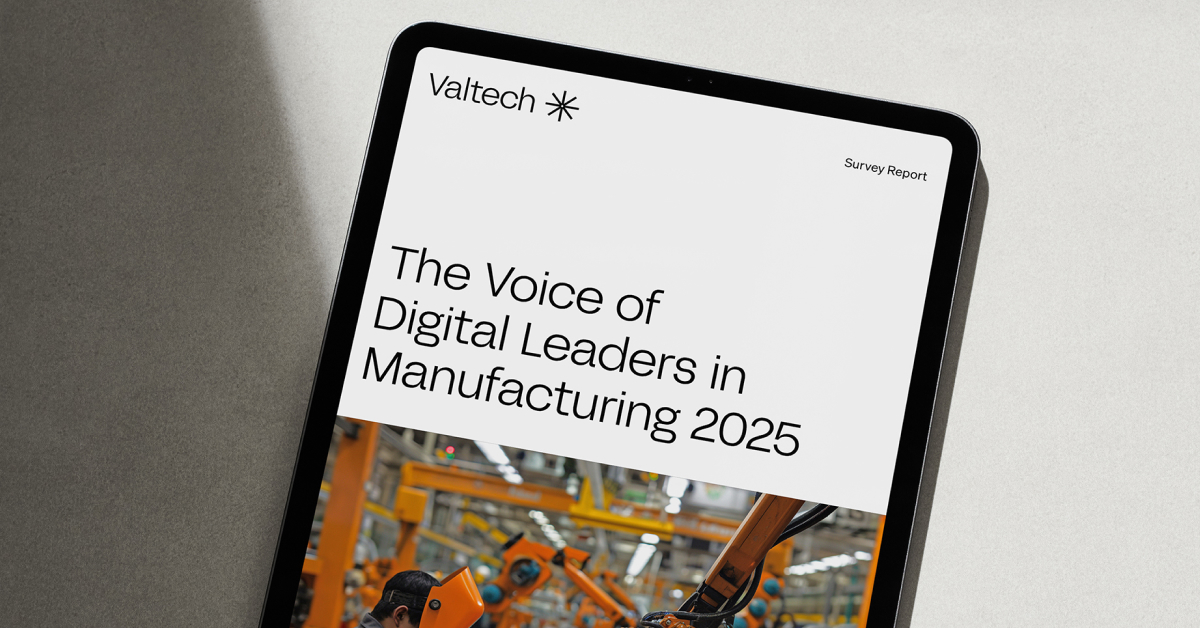We sat down to brainstorm about potential answers to these and other important questions recently. What follows is a distillation of our conversation where we help answer the questions on every brand’s mind and offer our advice to firms looking to grow their market share without getting caught in the complexity.
TP - Pascal, we’ve seen it many times before; companies that fail as a result of their success. Often that’s because they are expanding at rapid rates but not paying enough attention to the technology stacks that are underpinning company performance.
PL - Absolutely, it’s really common for us to see particularly the larger companies expanding into markets where they might not previously have had a presence—they are buying up the market leader in that region to capture the market share, and then having to work out how to seamlessly incorporate that company into the overarching business without causing massive disruption.
TP - That’s clearly a risk for brands needing to continue to deliver amongst a lot of uncertainty. In an age where customer experience is so vital, that must throw up all kinds of issues when it comes to continuing to deliver frictionless experiences that are actually converting for the business. How can companies make sure that they are maintaining that front-end delivery whilst they are working out the complexities of the back-end?

PL - It’s complex but it’s certainly not a deal breaker. Historically the front-end experience and assortment are intrinsically linked to the back-end structures. By taking an approach where you decouple those elements you can really help in harmonising the front-end/end-user experience. This is where MACH technologies come into their own. The general concept with MACH (Microservices, API-first, Cloud native and Headless), is that you are able to work with everything in small chunks. It stops being a question of changing the entire technical infrastructure, and instead gives you the option to change smaller elements in isolation. That means that companies can keep working away at the back-end development and consolidating systems, whilst making sure there is no obvious impact to the customer experience.
TP – So, we’re seeing more and more how looking at microservices, cloud and headless technologies could give companies a bit more security and flexibility as they continue to grow.
PL – Potentially, yes. You need to make sure that this approach is the right one for your company and your overall objectives, but it certainly has the power to make a massive difference to how you scale as a business. Take large manufacturers as an example here. They have multiple product lines each with their own websites and product offerings. That’s already a hugely complex technical environment. If you want to maintain that seamless commerce offering towards your customers, it means you have to make sure everything is harmonised at the back-end. With a MACH structure, you can decouple the customer experience from the back-end monoliths.

TP - So if you were to look under the hood, it’s likely that it’s still pretty complicated but by using the MACH approach that complexity isn’t going to impact the customer experience?
PL - Right, but obviously we don’t want the back end to stay complex and complicated permanently, we need to work on that over time of course. What MACH techs enable you to do is to continue to scale without a noticeable impact to your customers.
TP - This is a relatively new concept to lots of businesses; where should they begin if they want to shift to this kind of approach?
PL - We’re providing some guidance as part of this Commerce Series, but my advice to people would always be to speak to someone who knows this inside out. If you decide to go down the MACH route, it’s going to require you to think about team structures, ways of working and of course a financial investment. A microservices approach isn’t just a technical approach, it’s an organisational approach where you organise teams around bits of functionality. Note that this doesn't have to be at the extreme end of the spectrum (thinking of the likes of Amazon and Spotify), the same can still be achieved even if you are a less mature organisation. It’s all about doing what’s right for your company in the long term, giving you the protection you need to scale and making sure that you don’t lose customers along the way.
TP - What would your takeaway message be here?
PL - I would say that when it comes to growing your business and acquiring new companies, the most vital thing is that your customer experience is as good as it can possibly be, that customers don’t notice a change in operations, and that you maintain the cover of unity. When it comes to the back-end, we can accept that it’s going to be messy for a while, but when it comes to the front-end, keep the outer layer consistent and you’re giving yourself the best shot at success in the immediate term.
The Valtech Commerce team works alongside some of the world’s best-known brands to deliver best-in-class commerce solutions to transform businesses for the long term. With 3500+ specialists in 45 offices across 16 countries, whatever you need to achieve, our teams are here to help you succeed.







